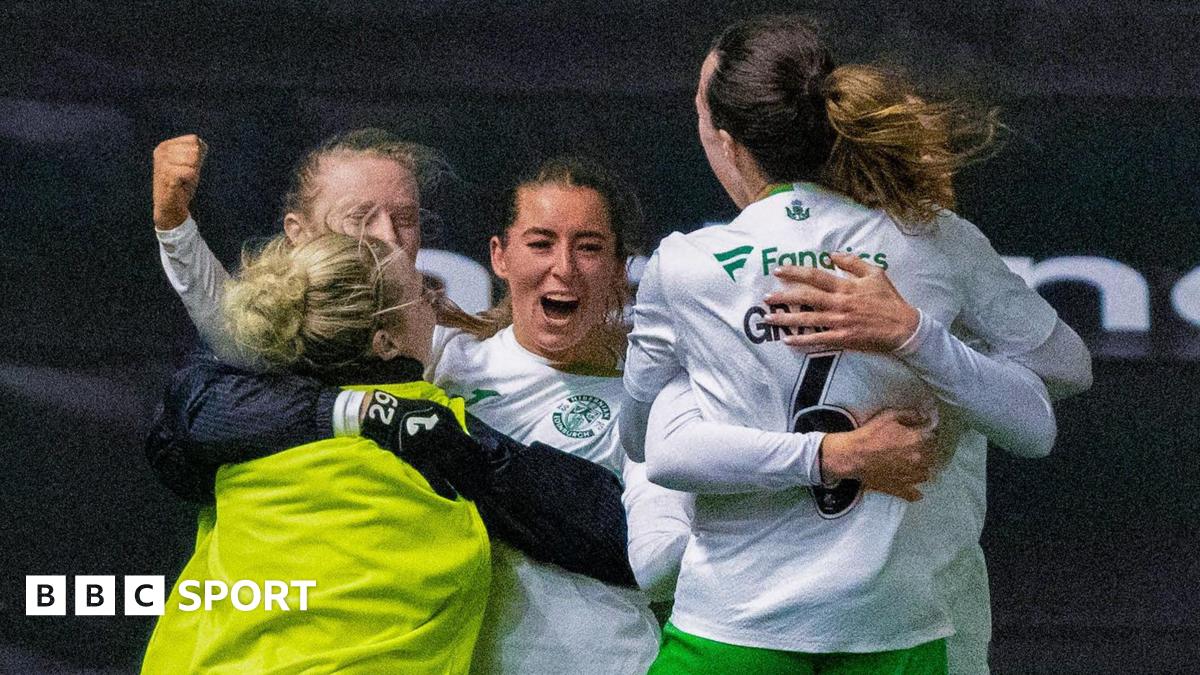World
Why Iga Swiatek’s Wimbledon record is not a simple narrative of surface tension

One Wimbledon exit record: first round; fourth round; third round; quarter-final; third round.
Another Wimbledon exit record: fourth round; fourth round; third round; first round; fourth round.
The first player has been labelled as unable to crack grass. The second was called an “undeniable contender” for the title at the All England Club.
The first player here is Iga Swiatek, world No 1 and five-time Grand Slam champion; the second is Coco Gauff, world No 2 and defending US Open champion. There are complicating factors to the discussions around them: Gauff’s 2024 draw and the withdrawal of world No 3 Aryna Sabalenka eased her path, and her breakthrough tournament was Wimbledon, when she beat Venus Williams on the way to the fourth round in 2019. Swiatek is the runaway world No 1, and is expected to do well wherever she goes.
Swiatek’s best run at Wimbledon is to the quarter-finals (Clive Brunskill/Getty Images)
Gauff lost to compatriot Emma Navarro in the fourth round, after three imperious performances. And after her three-set defeat to Yulia Putintseva in the third round, Swiatek said: “I literally came back to work — not tennis-wise, but off-court stuff — and I shouldn’t have done that.
“Maybe next year I’m going to take a vacation and literally just do nothing.”
Not practising more on grass, or playing warm-up events — including the incoming WTA 500 event at Queen’s in south-west London — but resting. There was a great deal of dismay at Swiatek’s exit, and even some anger, it felt like, that she’d still not figured out a way of playing on her least favourite surface. It was that pesky grass again, her own personal white whale at the Grand Slam tournament that players crave above all else.

GO DEEPER
White whales and green grass: Why Wimbledon is the Grand Slam title every player craves
Except, after winning her fourth French Open in June, she revealed that in autumn 2023, she had contemplated practising on the grass during the off-season, despite Wimbledon being almost a year away. The last time she did play a grass-court warm-up, also in 2023, she cruised through to the semi-finals in Bad Homburg before withdrawing with illness. These aren’t the kind of thoughts associated with a player considering perhaps the most prestigious tournament in tennis as something best prepared for by taking a break from the sport.
Also following that French Open win, Swiatek delivered the kind of lament that only a player of her calibre can. “If I would lose here earlier, maybe I would be able to play two more weeks on grass, and then be a better grass player.”
She is 23; she is a five-time Grand Slam champion on two different surfaces; she has been world No 1 for over 100 weeks; and she currently holds seven of the last 11 WTA titles at Grand Slam and Masters 1000 level. She is the only woman aside from Serena Williams to win five titles at those levels in one season in the last 20 years (in 2022 and 2024.)

Swiatek looked untroubled in her matches prior to facing Yulia Putintseva (Robert Prange/Getty Images)
She is likely to win many more French Open titles, meaning that if she does win Wimbledon, she will probably have to do the so-called Channel Slam: a Roland Garros-Wimbledon double in the same year. Only seven players have ever managed it on the women’s side — Margaret Court, Evonne Goolagong, Billie Jean King, Chris Evert, Martina Navratilova, Steffi Graf and Serena Williams. Carlos Alcaraz became just the sixth man to do it when he beat Novak Djokovic in Sunday’s men’s final at Wimbledon.

GO DEEPER
Tennis usually passes the torch. Carlos Alcaraz is running away with it
Rafael Nadal, the 14-time French Open champion who is also Swiatek’s idol, was only twice able to add a Wimbledon title a few weeks later. From 2011 onwards, he has not even made a Wimbledon final, with as many second- or first-round exits as semi-final appearances (three). Roger Federer only did the double once, in a year when Nadal was removed from his path. Djokovic himself has done it twice; Rod Laver and Bjorn Borg are the two others.
Invoking those names is a reminder of how much the “Big Three” and the younger Williams moved the goalposts in terms of what is possible and realistic in elite tennis. Plenty of the best players of all time never did the French Open-Wimbledon double in the same year; Ivan Lendl, eight times a Grand Slam champion, couldn’t land the Wimbledon title even when he started skipping Roland Garros towards the end of his career, in a bid to capture the one major that had eluded him. It is not a normal thing to do — even for someone of her ability.
The feeling of comedown after a deep Roland Garros is also totally normal and to be expected. Dominic Thiem, twice a French Open runner-up, told The Athletic recently that he looked on in awe at the ability of Djokovic, Federer, and Nadal to have deep runs in Paris and then a few weeks later at Wimbledon. In his case, both Roland Garros finals were followed by a first-round exit in south-west London, one by retirement. “The tank was empty,” he said.

Swiatek’s prodigious clay-court form gives her little time to prepare for Wimbledon without sacrificing rest (Mateo Villalba/Getty Images)
Swiatek echoed these words after losing to Putintseva. “My tank was suddenly empty,” she said. Though not everyone feels this way. After reaching the French Open final, Jasmine Paolini said that grass wound her up so much that “I remember some years I was almost crying every day, and if I wasn’t crying I was very sad.”
The overarching conditions aren’t the only thing to consider in what makes a tennis narrative accurate, inaccurate, or in the case of Swiatek and the grass, somewhere in between. Her last three Wimbledon defeats have all featured two of the biggest weaknesses in her game: a surfeit of forehand unforced errors when rushed, particularly on the faster, lower bouncing grass, and a reticence to changing her gameplan and introducing variety in the face of things going wrong — especially against players who are capable of hitting her off the court (and, more importantly, have started exercising that capability.)
They have also featured Alize Cornet — who has made a career out of upsetting top-10 players at Grand Slam tournaments, including Serena Williams — the 2023 Elina Svitolina, both in irrepressible form and riding a never-to-be-repeated wave of crowd support; and a peaking version of Putintseva who hit two unforced errors in 13 games after going 7-0 on grass for 2024. None of these things have anything to do with Swiatek and grass, really — and in the first and second rounds, she looked clinical and in control against the dangerous Sofia Kenin and Croatian Petra Martic.
The lack of variety is also not intrinsic to her game. In her 2020 French Open win, drop shots and coming forward were a key part of her strategy, which has since been simplified under coach Tomasz Wiktorowski and has delivered inarguable results — but could possibly be used again in a bid to win at Wimbledon.

Swiatek’s net game is not nonexistent; it has just been stripped back (Clive Brunskill/Getty Images)
She’s also far from the first elite player of recent times to take a while to figure out one surface. Swiatek’s other title is a US Open, and in the last 52 weeks she has a 48-7 record on hard courts, including titles in Qatar, Indian Wells, and at the WTA Finals. Seven-time Wimbledon champion Djokovic didn’t win his first title, or even reach a final, until he was 24 — and Swiatek has plenty of time on her side. All those hard-court wins, alongside her clay-court dominance, have gone a long way to the 11,285 ranking points that Swiatek currently holds, more than 3,000 more than the world No 2 Gauff. Since the WTA ranking points system changed towards the end of the 2000s, only Serena Williams and Swiatek have crossed the 11,000 mark.
Over the next couple of months, Swiatek has the chance to demonstrate that all-court ability, taking in first the Paris Olympics on her beloved clay, and then on the hard courts of the US Open, where she could join Naomi Osaka as the only active player with multiple titles at Flushing Meadows.
Much of the reaction to Swiatek’s Wimbledon exit was down to the simple newsworthiness of a clear world No 1 going out of a Grand Slam so early, and her grass-court tennis is likely not at the level it will need to be to win Wimbledon just yet. But it’s also important not to let expectations be warped, or the raw facts behind narratives be twisted, by the achievements of the very, very best players of tennis’s most recent era in the fullness of their careers.
A five-time Grand Slam winner and Wimbledon quarter-finalist having only just turned 23, Swiatek’s doing alright.
(Top photo: Glyn Kirk/AFP via Getty Images)







